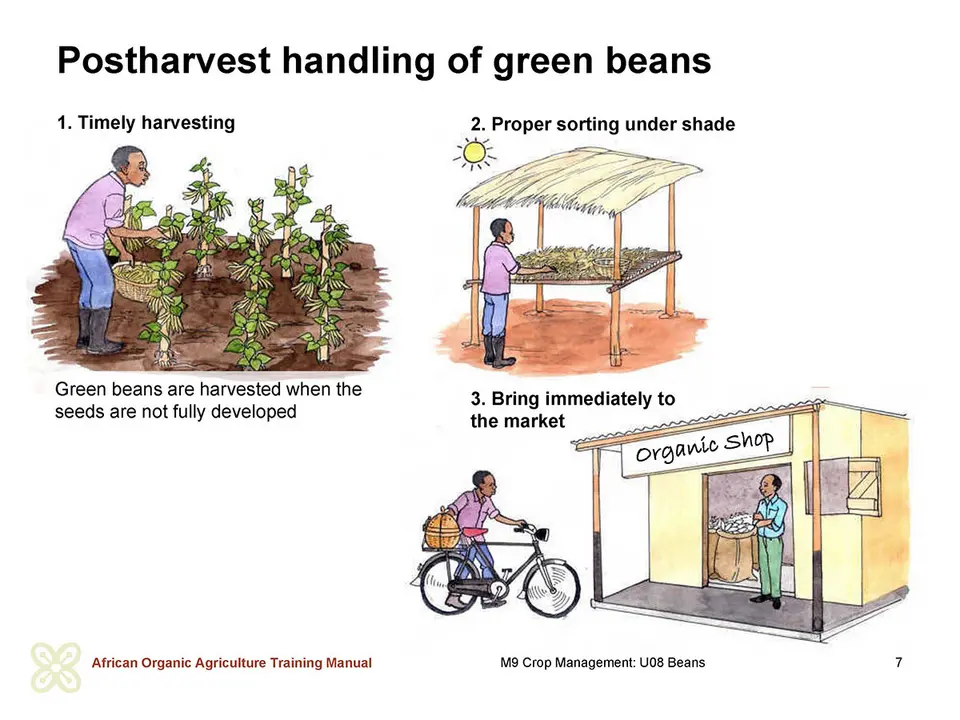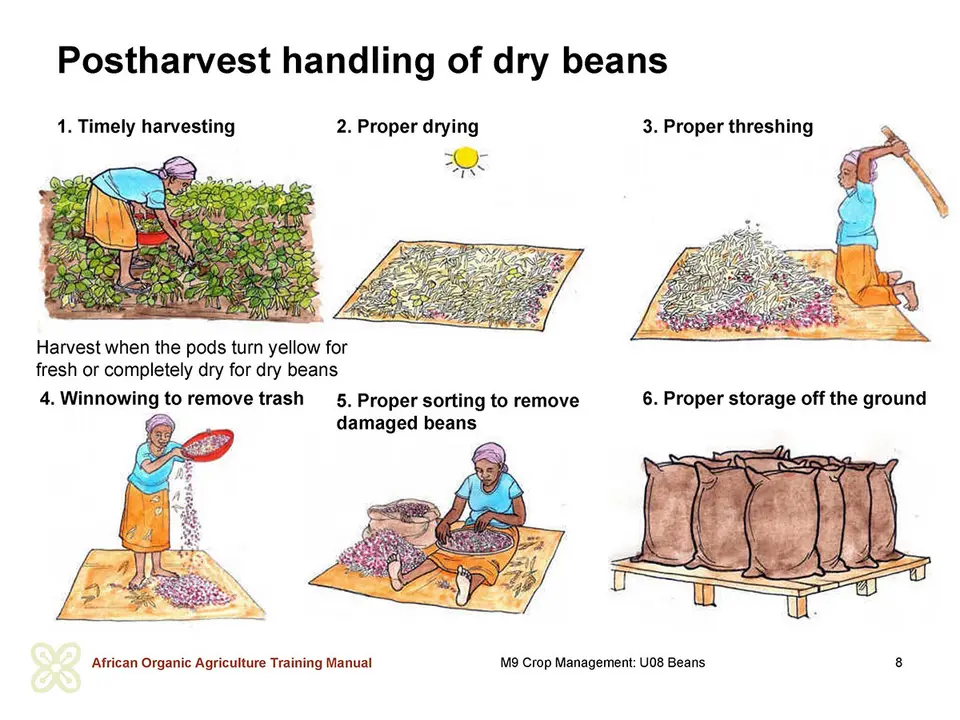Improving postharvest handling
In order to obtain good quality beans, minimize losses and avoid contamination risks from extraneous materials and agents, proper handling of beans is necessary. Depending on how the beans will be consumed (i.e. green, fresh or dried seeds), handling requirements will be different
a. Green beans
They are harvested when the seeds are not fully developed. The beans should snap clearly when broken. The seeds of climbing beans are usually more developed than those of bush beans, but must still be soft and sweet.
The harvesting of bush beans begins after about 6 to 7 weeks, climbing beans 7 to 9 weeks after sowing. Bush beans are usually harvested 2 to 3 times with a 3 day interval. Climbing beans are harvested up to 6 times. Harvesting should be done early in the morning. The plants should be dry and in order to prevent moulding, the pods should not be washed.
The harvested pods of green beans must be put in a cool storage area at a temperature of 7 °C within a few hours after picking, if possible. Lower temperatures cause chilling damage. In the field the beans should be placed in the shade immediately after harvest and covered with a damp cloth. Green beans lose moisture, and hence weight, very quickly and turn floppy. Green beans mature very fast and require a good cooling system and ready markets to absorb the regular harvests.
b. Dry beans
Dry beans - These are harvested when the pods either turn yellow for fresh consumption or completely dry for storage purposes. The plants are uprooted and spread on the ground to dry or left to dry on the trellis. In some cases, the bean plants are tied up under shade/shelter to dry. Once the plants are dry the pods are threshed by hand or by slowly beating the pods in a sack to split them open without damaging the seeds. The seeds left in the sun to dry further are put on a raised platform or protected area to keep children and animals away. They are dried to a moisture content of less than 15 % (when the seeds are brittle when bitten). They should then be winnowed to remove all the chaff and sorted to remove broken beans, stones, deformed beans or any remaining plant parts. Broken and deformed beans can be prepared and eaten immediately because they do not store well. The beans should also be separated according to variety in order to increase their market value. Properly sorted beans attract a better price than unsorted beans.
Storage is done in clean cloth/sisal bags or sealed containers that should be checked occasionally to prevent infestation of bean weevils. Stored bean seed should be placed out in the sun occasionally (once every month) in order to reduce moisture content and to kill off pests. In some places, farmers mix the stored beans with maize or millet flour in order to keep pests away. This is mostly done for beans that are to be consumed by the farmer when the flour is washed off before cooking the beans. Bean seeds for next season’s planting can be mixed with dried leaves of marigold, tephrosia, neem or any other locally tried plant, in order to keep storage pests away.
Discussion on postharvest handling of beans
Discuss potential for improvement of postharvest handling of beans by asking the farmers the following questions:
- Describe how you handle the bean crop from harvesting to drying and storage?
- Identify any shortcomings with the methods used and recommend appropriate modifications.


 tap and then scroll down to the Add to Home Screen command.
tap and then scroll down to the Add to Home Screen command.